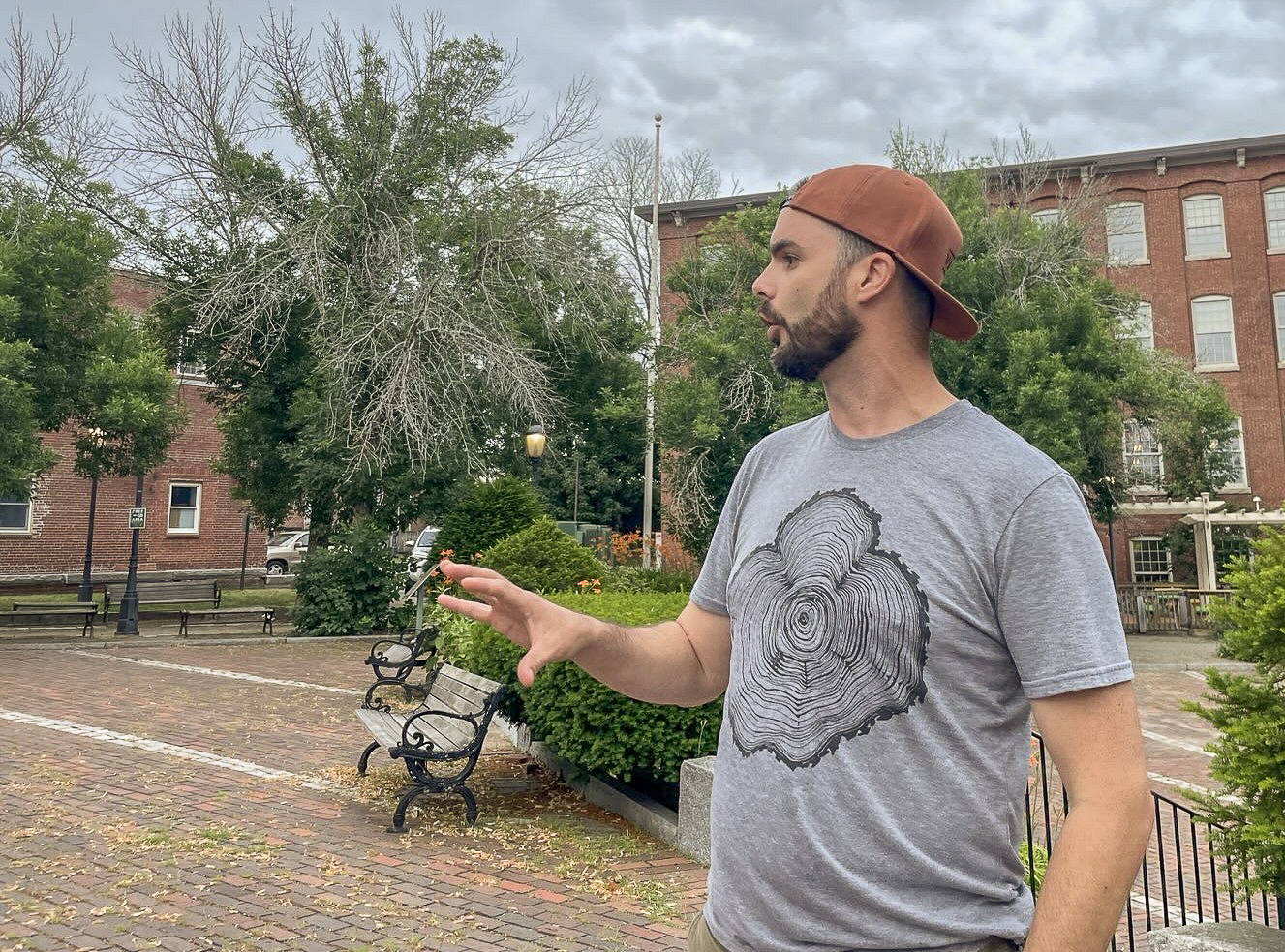posted on 8/19/2025
 The invasive emerald ash borer beetle is actively killing Dover’s downtown ash trees, requiring the removal of more than 50 trees in the next 1-2 years. The effects of the invasive insect can be spotted throughout downtown (and around the region) in ash trees’ dead limbs.
The invasive emerald ash borer beetle is actively killing Dover’s downtown ash trees, requiring the removal of more than 50 trees in the next 1-2 years. The effects of the invasive insect can be spotted throughout downtown (and around the region) in ash trees’ dead limbs.
Planning Department staff are hosting downtown walks to inform the public about the issue; the next one is Thursday, Aug. 21, at 6 p.m., starting at City Hall. The walk lasts about an hour, concluding at Franklin Square.
Lindsay Watkins, Strafford County Forester with the University of New Hampshire’s Cooperative Extension, leads the public walk, pointing out the ash trees that line many areas of downtown, how to identify an infestation of the invasive emerald ash borer, and how an infestation nearly always means the tree will die within a few years and become a safety hazard. Watkins will also discuss the history of the emerald ash borer infestation in the United States that began in the Midwest earlier this century and has quickly migrated east. The emerald ash borer beetle is native to northeastern Asia.
Part of the walk includes the characteristics of a successful street tree, how conditions for street trees differ from forest trees, and why native species don’t always make the best street tree. City staff are creating a tree replacement plan and seek the public’s input on the downtown’s tree canopy through an online survey.